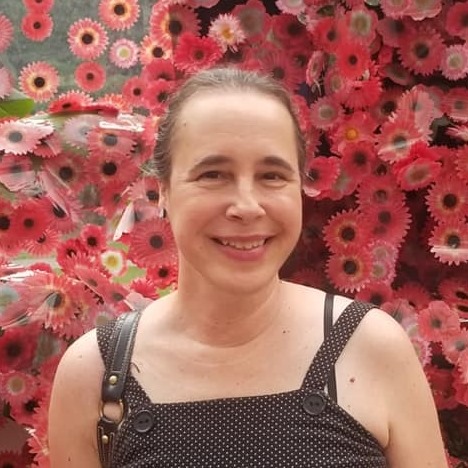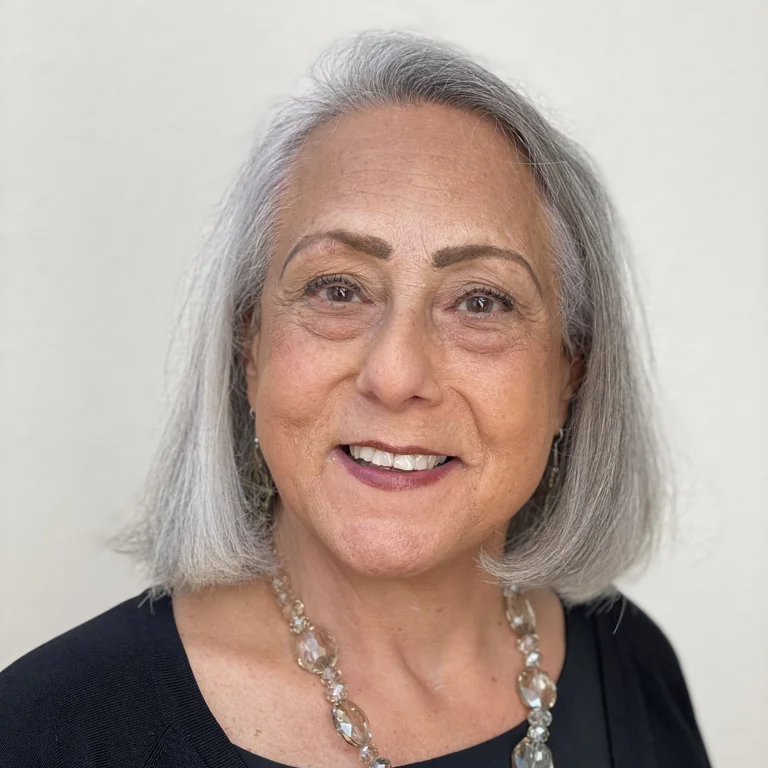Going DIEP
Twenty years ago, Diane Heditsian advocated to get DIEP flap breast reconstruction. New changes to medical billing coding have her back at it, this time for all others.
- 02/23/23
Editor’s note: Since this blog was published, after seven months of our community raising awareness, making calls, and writing letters, the U.S. Centers for Medicare and Medicaid Services reinstated S2068, the billing code that covers DIEP flap reconstruction. This is a big win for the breast cancer community.
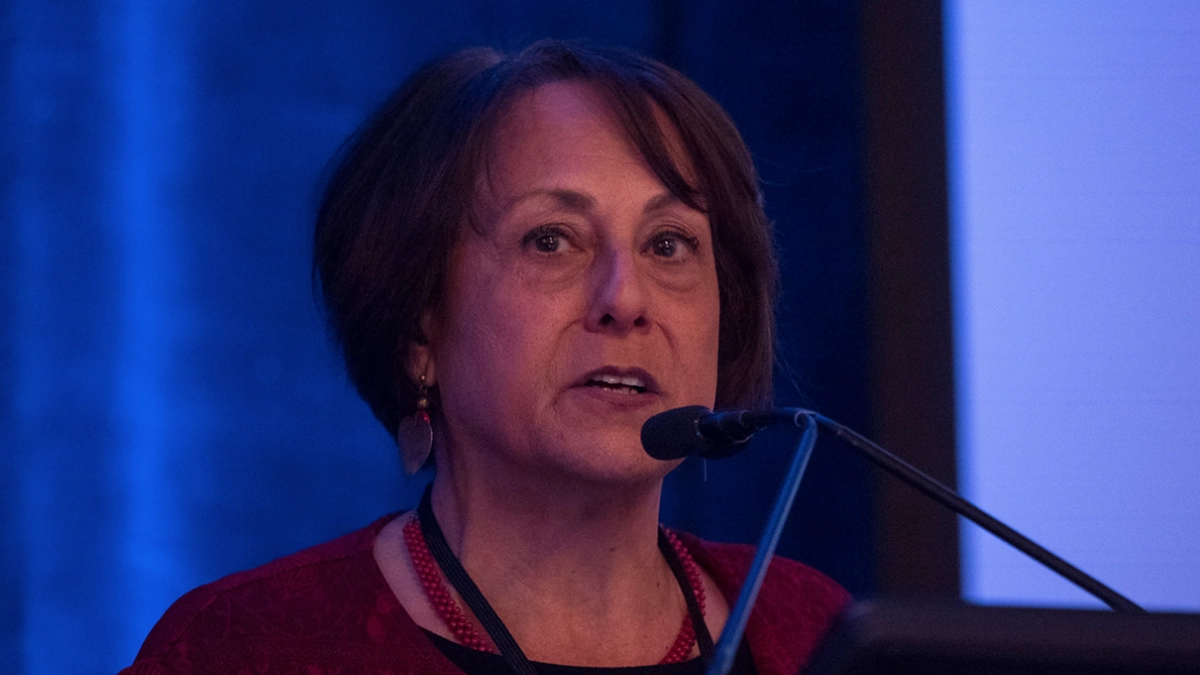
When Diane Heditsian was first diagnosed with breast cancer, in 2002, one decision about her upcoming treatments was clear in her mind: “From day one of my first diagnosis, when the doctor said, ‘You need a mastectomy,’ I knew I did not want implants for my breast reconstruction,” she recalls.
Heditsian, then 48, wanted a reconstructive surgery that was new at the time: a DIEP (deep inferior epigastric perforator artery) flap, a muscle-sparing surgery that allows people to use their own tissue, blood vessels, and fat to create a breast.
“I wanted it to feel natural and be natural, and I didn’t want all the follow-ups that implants require—including having the implants replaced every 10 or 15 years,” she explains. “If you’re a younger woman with breast cancer and a mastectomy, you’re talking a number of times in your lifetime that this will happen.”
Heditsian’s private health insurance, however, did not want to cover the expense of DIEP flap surgery. If she did not want the more common reconstruction with implants, her insurance was willing to pay only the cost of an older procedure called a TRAM (for transverse rectus abdominis myocutaneous) flap. TRAM flap reconstruction, which uses part of an abdominal muscle (even a “muscle-sparing” TRAM flap uses some muscle), is simpler—and generally about 70% to 90% less expensive to perform—than a DIEP flap, which typically costs $50,000 or more. Part of that cost comes from the specialized microsurgery and the time required to connect the blood vessels in the flap to the blood vessels in the chest.
But having done her homework, Diane knew that TRAM flap surgery often presents challenges.
“Once the TRAM takes away that abdominal muscle, you may have to roll out of bed, because you cannot lift yourself out. You can develop hernias. You can have incredible back pain due to a weakened core,” Heditsian says, explaining some of the procedure’s risks and potential complications. “Even the nurse at my insurance company, when I was talking to her, said, ‘Oh, my mother had a TRAM flap. I know exactly what you’re talking about and why you want the DIEP flap.’”
Rather than settle for a procedure she didn’t want, Heditsian decided to travel across the country from her home in California to a plastic surgeon in New York who was regularly performing DIEP flap surgeries. And then she fought with her insurance company for two years, finally gaining full coverage for the DIEP flap procedure.
“I have my own company,” says Heditsian, founder and CEO of a life-science digital-communications firm, “so I was at my computer all day. It was not hard for me, over my first cup of coffee, to dial the insurance company again, or to file another grievance and appeal. You can file as many of those as you want, and the insurance company has to keep reviewing them and get back to you within 30 days. They even have to submit it for you if you don’t want to write your own.”
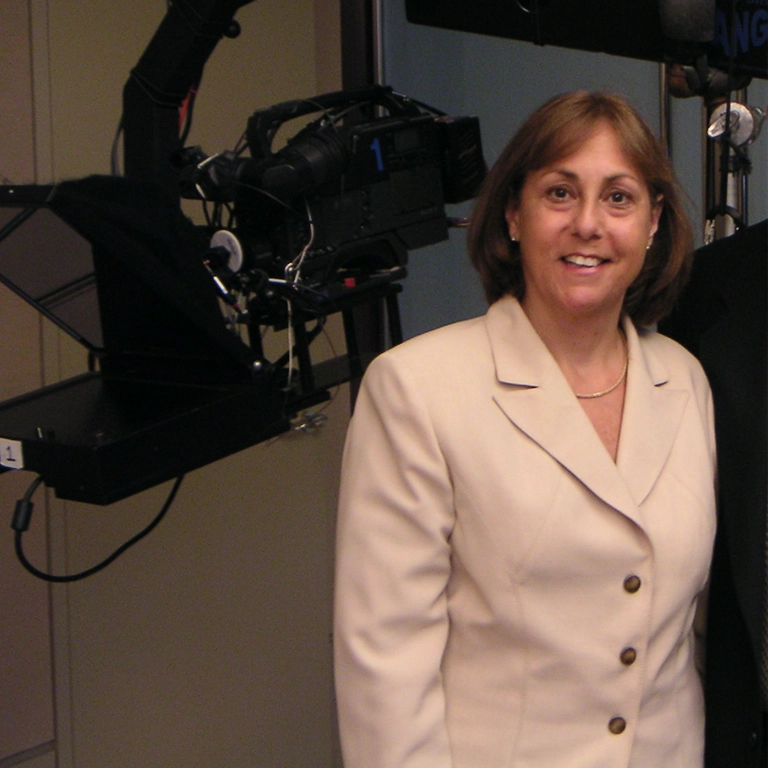
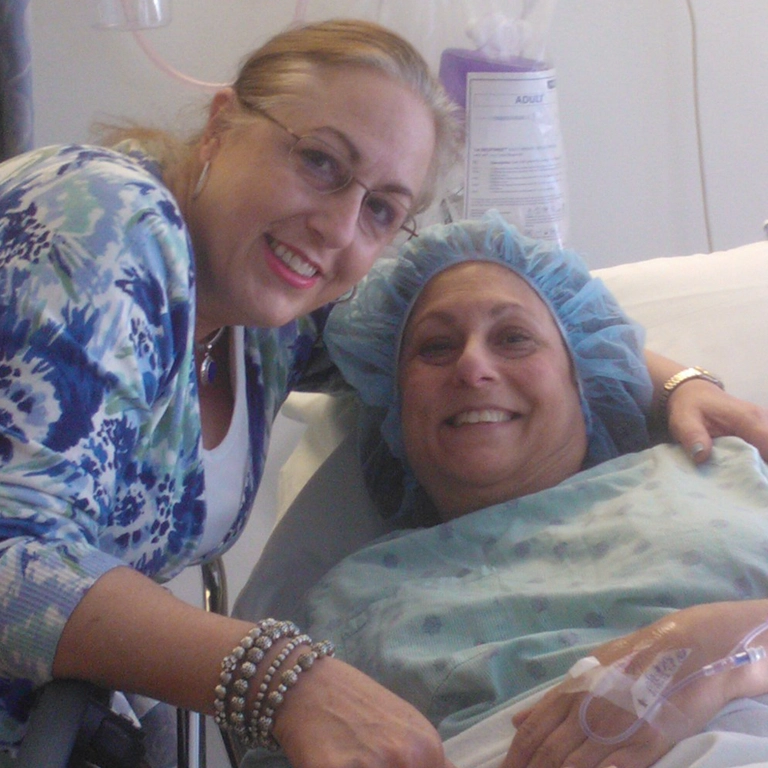
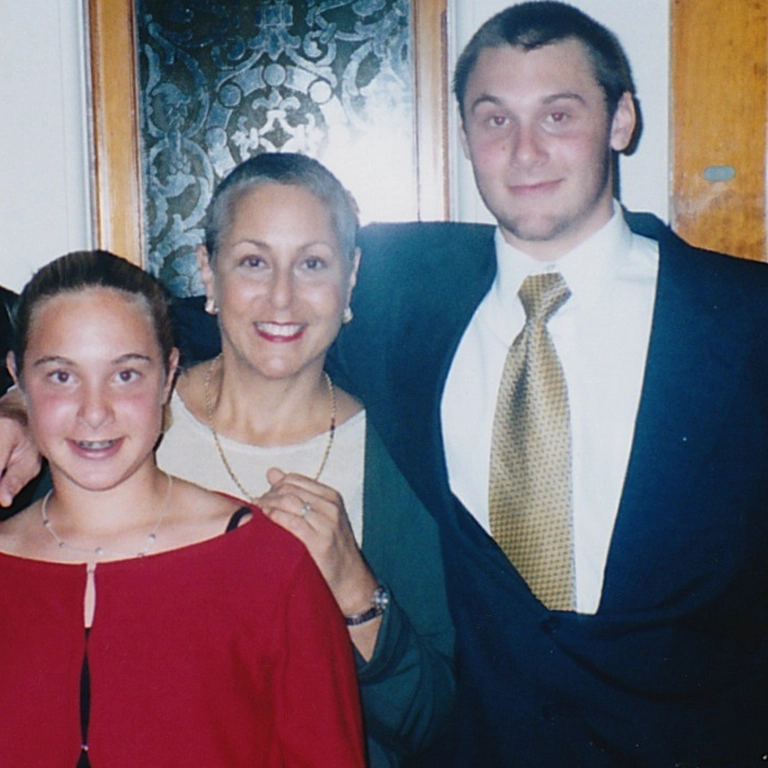
An advocate rises
Heditsian’s coverage and payment victory helped her see that the same could be possible for other women who wanted DIEP flap surgery. And her positive surgical outcome—she was on a plane home a week after her operation and has been lastingly happy with her results—convinced her that others should have access to this surgical choice.
Over the years, as a breast cancer advocate, Heditsian has helped many women gain full insurance coverage for their own DIEP flap procedures and has lobbied for the surgery to be properly covered as a matter of course.
Ultimately, DIEP flaps and other flap surgeries that spare the muscle became more popular; and for years, in part because of advocacy, they have routinely been covered at a rate that reflects the complexity of the procedure. Case in point: When Heditsian developed a new primary cancer in her other breast and then a local recurrence—ultimately deciding, in 2017, to have another mastectomy—she easily received insurance coverage for her chosen reconstruction.
“I had another surgery similar to a DIEP, using my own tissue,” she says. (Due to the blood-vessel requirements of DIEP flap surgery, someone can have it only one time, for a single or a double mastectomy.)
With the first reconstruction, I had to fight my insurance company for two years. By the second one—it was no longer an issue, thanks in part to the work I had done 15 years earlier.
New DIEP threats
During the COVID-19 pandemic, a coding change was announced by a federal agency, the U.S. Centers for Medicare and Medicaid Services, that has threatened access to this procedure—and put people’s freedom to choose DIEP flap at risk. This change to medical billing codes places all tissue-based breast reconstruction surgeries under a single code, despite significant differences in the level of expertise needed to perform them and the length of the surgery—rather than keeping dedicated codes for each procedure. Therefore, after December 31, 2024, DIEP flap reconstruction surgery will again be paid only at the rate of TRAM flap surgery. Most surgeons won’t be able to perform a DIEP surgery for that amount, and so the patient will be required to pay the difference, a significant amount. Some surgeons will likely stop offering the surgery altogether. Private insurance companies tend to follow CMS’s lead, and the coding change is already causing coverage denials.
“We can’t figure out what really happened,” Heditsian says of the change. “Any sane person hearing this story would say, ‘Why would they take a procedure that was far superior, an advance in medical science that is approved by all professional societies—why would they take it away after all these years? That just doesn’t make sense.’”
The financial “gains” of offering coverage for only less-advanced procedures, she points out, will be negated later: “There are so many reasons why it’s to the benefit of the insurers to cover this properly. Down the line, women may have complications with implants and all the unintended consequences from the TRAM. With DIEP surgery, once it’s done, it’s done.”
“They’re not thinking about the long-term health advantages of DIEP flaps,” she says, “They’re also not thinking about women who can’t have implants due to their breast cancer treatments or underserved women, including many women of color, for whom a DIEP flap is now completely off the table.”
Research has shown that Black women lean toward non-implant reconstruction more often than white women. “What we don’t want,” Heditsian says, “is for this to become—which it will, unless we win—a surgery for only rich white women.”
“Number one, it’s a health-equity issue,” she continues. “It’s a 'woman’s choice in health care' issue, and that topic has arms and legs in 2023. This is just one more example.”

Advocating for others, again
The coding change has thrust Heditsian back into reconstruction advocacy.
“Having already had two mastectomies and reconstructions, I have nothing to gain here personally,” she points out. “For me, this is about breast cancer survivors—who remain united, strong, and, apparently, sorely underestimated.”
This time, though, Heditsian isn’t going it alone.
“Many breast cancer advocacy organizations are behind this fight,” she says. “We’re working with Congresswoman Debbie Wasserman Schultz and Senator Amy Klobuchar,” both of whom have had breast cancer. “And Senator Marsha Blackburn is pushing for a fix. We have Republicans and Democrats, women and men. We have to nip this new problem in the bud.”
“I’m one of the lucky ones,” Heditsian states, in terms of her surgical outcomes and her overall health. “It’s why I am an advocate—because there are so many women who can’t do this, because they’re no longer here, or they’re still facing cancer.”
Concerned about this issue?
We encourage members of our community to take these steps:
- Enter your zip code in this tool to get the names and contact info for your senator and congressperson
- Contact your congresspeople to share your personal story about why breast reconstruction choices are important to you
- Ask them to pressure CMS to reinstate S2068, the billing code that covers DIEP flap reconstruction, and other codes for specialized breast reconstruction; include your name and zip code so your rep knows who you are
- Contact your private health insurance company and ask them to commit to reimburse DIEP flap reconstruction at an appropriate rate into the future, to ensure people have access to all standard options
- Join the Community Breast Reconstruction Alliance started by Dr. Elisabeth Potter, MD and share your story there.
Learn more
DISCLAIMER:
The views and opinions of our bloggers represent the views and opinions of the bloggers alone and not those of Living Beyond Breast Cancer. Also understand that Living Beyond Breast Cancer does not medically review any information or content contained on, or distributed through, its blog and therefore does not endorse the accuracy or reliability of any such information or content. Through our blog, we merely seek to give individuals creative freedom to tell their stories. It is not a substitute for professional counseling or medical advice.

